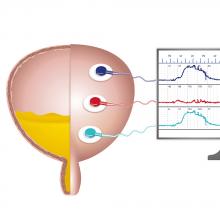Countless Australian men and women suffer from this condition without realising that treatment is available. Read on to find out more.
What is urinary incontinence (UI)?
Urinary incontinence is a condition involving the accidental or involuntary loss of urine and affecting men and women of all ages. Despite being a common condition, urinary incontinence can have an enormous impact on quality of life and does not need to be accepted as a normal part of life.
Many people are affected by embarrassment and fail to seek help as a result. The incorrect assumption that nothing can be done is a serious obstacle to getting treatment, and it can also prevent the individual from living life freely.
It is important to realise that urinary incontinence is a preventable, treatable and curable condition. While surgical options are available, non-surgical treatments such as physiotherapy and medication can also be highly effective.
Types of Urinary Incontinence
There are a number of different types of urinary incontinence. While both men and women can be affected, some types strongly affect one gender more than the other.
- Urge urinary incontinence (UUI)
- Mixed urinary incontinence (MUI)
- Overflow urinary incontinence
- Stress urinary incontinence (SUI)
- Fistula related
- Functional incontinence
Symptoms
As there are numerous types of urinary incontinence, there are also numerous symptoms that can manifest as a result of the condition. Severity of the condition can also affect which symptoms are most prevalent and how often they are experienced.
- Leakage of urine with sneezing, coughing, running and other physical activity
- Sudden and urgent need to urinate
- Leakage of urine prior to reaching the toilet
- Leakage of urine without awareness
Assessment
Assessment of urinary incontinence at our Melbourne clinic involves a combination of your medical history, a physical examination and any other tests that are necessary to diagnose the cause of the issue. This will be enough for diagnosis in the majority of cases, but some may require additional investigation in order to discover the source of the issue along with which treatments will be effective.












